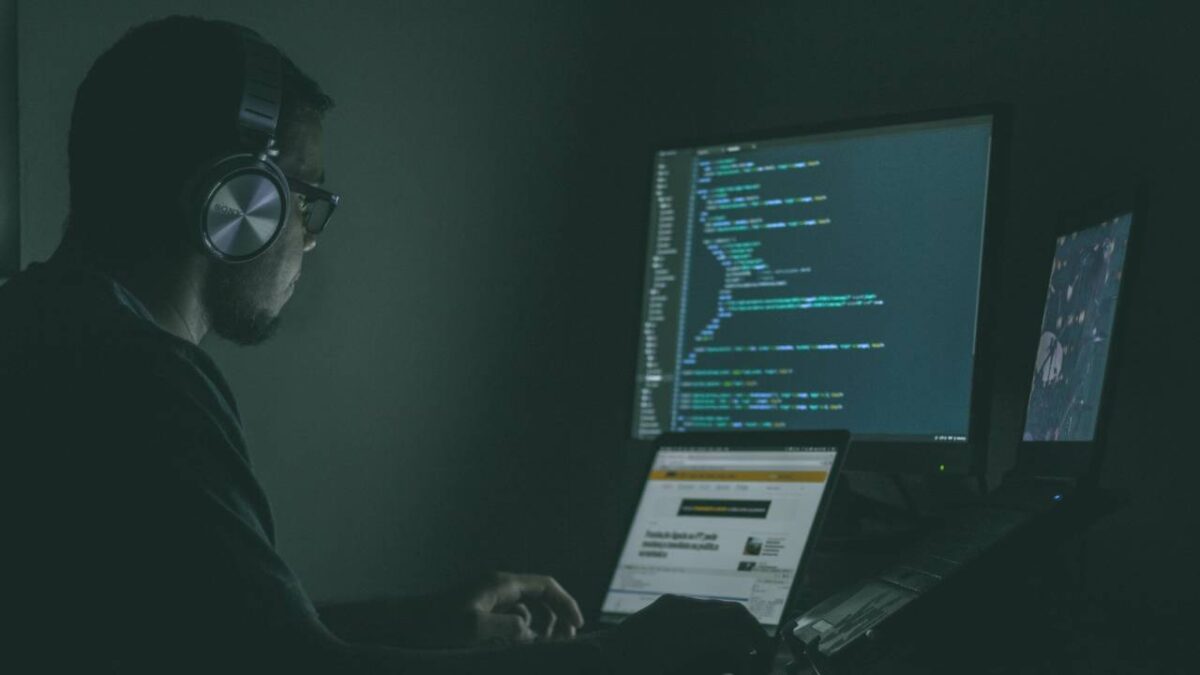In the digital age, where aesthetics drive user engagement, web design has shifted its focus towards creating visually appealing interfaces. While it is indisputable that attractive web design helps generate traffic and conversion rates, cybersecurity is equally important in ensuring that users can trust and safely interact with your online platform. In this article, we will take a look at the role of cybersecurity in the broader scope of web design.
Key Takeaways
- Striking a balance between aesthetics, usability, and cybersecurity is essential in web design
- Overlooking cybersecurity can lead to loss of trust, damaged reputation, or legal issues
- Integrating security practices from the start is crucial for protecting users’ information and privacy
Web Design and Aesthetics

When it comes to web design, aesthetics play a significant role in creating a visually appealing environment for users. Aesthetics, or visual design, involves arranging various elements to create an attractive and cohesive overall appearance. Web designers often turn to factors such as colour palette, typography choices, image selection, and layout to effectively convey a particular brand or company’s message.
Web aesthetics strongly impact the user experience. A visually appealing website tends to grab the user’s attention, making them more likely to stay and explore the site. It is essential to find the right balance between visual appeal and functionality, as a visually stunning site might lose its impact if it is challenging to use.
Typography choices are an essential aspect of web aesthetics. Choosing the right font and text size can influence readability, ensuring users can easily digest the information provided. Beyond functionality, typography can also contribute to the site’s overall atmosphere, as different fonts can evoke specific feelings or associations in the mind of the user.
Visual appeal is not limited to typography and colour choices; the images used on a website are equally crucial in creating the desired aesthetic. High-quality images that complement the overall theme can significantly enhance the user experience, highlighting key information and contributing to the site’s overall atmosphere.
Achieving Usability and User Experience
Ease of Navigation
Usability and user experience (UX) in web design play a crucial role in achieving an intuitive navigation system. A well-structured information architecture helps users find the information they need quickly and efficiently. Human-computer interaction encompasses aspects such as navigation menus, links, buttons, and forms, all of which contribute to creating a usable website.
Effective Communication
Clear and concise communication throughout a website is vital for users to understand its content. Headlines should be attention-grabbing and provide context, while text should be simple and easy to read. In addition to text, imagery and graphics can help communicate concepts effectively, ensuring a smooth user experience.
Visual Cues and Hierarchy
Visual cues are essential components of web design that guide users through the site. A well-designed hierarchy in layout, colours, typography, and other elements helps users identify the most critical information and follow a particular flow, ultimately improving UX.
Responsive and Interactive Designs

Responsive design ensures that a website is functional and visually appealing across various devices, including different screen sizes and resolutions. Interactions and interfaces that adapt to each device and user’s requirements, such as sensor-based inputs, contribute to creating a smooth and enjoyable user experience.
Information Processing and Web Usage
Understanding how users process information is vital for web designers and planners. They should consider central and peripheral information processing while designing a website to ensure the most important content is easily accessible and discoverable. This consideration ultimately influences usability and user experience on the website.
Overall Customer Satisfaction
A well-designed website considers the users and their needs, leading to a higher level of satisfaction among online shoppers. A positive experience often increases the likelihood of repeat business, increased intention to purchase and recommendation to others. This customer satisfaction contributes to the overall success of a website and its business.
Web Accessibility
Accessibility is a crucial aspect of web design that ensures all users, including those with disabilities or impairments, can access and interact with a website. Features such as alt text, keyboard navigation, and high-contrast colours contribute to making a website more accessible, resulting in a better user experience for everyone.
Efficiency and Error Management
Efficient web design aims to minimise the number of errors users encounter and ensure that navigational elements are where they expect them to be. When errors do occur, a website should effectively communicate the problem and provide guidance to the user on how to resolve it. This error management leads to a better overall user experience on the site.
Role of Cybersecurity in Web Design

Securing Customer Trust
In the digital age, trust is paramount for any online business. Web designers can enhance trust and credibility by incorporating cybersecurity measures into the website’s design. Social proof, such as user reviews and testimonials, can bolster this trust. Security badges and trust seals from reputable providers, like SSL certificates and antivirus protection, reassure customers that their personal information is safe. By prioritising cybersecurity in their designs, web designers can contribute to their client’s success by fostering a solid, loyal customer base.
Protecting Privacy
The internet has made personal data more vulnerable than ever, making privacy a major concern for users. Web designers play a critical role in protecting the privacy of a website’s visitors. They should design websites with privacy policies that outline the client’s data protection procedures, addressing GDPR requirements and other global privacy standards. Displaying these policies in a clear and accessible manner, alongside incorporating secure sign-up and login processes, can help instil confidence among users that their privacy is being respected and safeguarded.
Preventing Security Breaches
Strong cybersecurity in web design helps prevent costly security breaches. By using secure code, implementing robust authentication methods, and ensuring the encryption of sensitive data, web designers can significantly reduce the risks of breaches occurring. Regular updates and vulnerability assessments are essential to maintaining a website’s security. When web designers prioritise cybersecurity, they can offer clients an invaluable service that ultimately safeguards their business, customers, and reputation.
Reputation and Brand Image
A company’s online presence is crucial to its reputation, and a secure website speaks volumes about its brand image. Web designers must be diligent in implementing practical security measures throughout the design process. A well-designed, secure website demonstrates to customers that the business values their safety and privacy, which fosters a strong and positive brand image. In turn, this enhances customer loyalty, word-of-mouth referrals, and overall growth. By incorporating cybersecurity in web design, web designers actively contribute to securing a company’s success, both online and offline.
Conclusion
The importance of cybersecurity in web design cannot be overstated. In today’s digital landscape, maintaining a user-friendly and secure website is essential. Integrating cybersecurity measures throughout the web design process can significantly reduce the likelihood of security breaches, protect sensitive data, and promote user trust.
The implementation of cybersecurity is not just a requisite for large organisations but also for small businesses and individual websites. By prioritising security from the earliest stages of web design and embracing ongoing maintenance, website owners can ensure they are taking the necessary steps to safeguard their digital presence.
Frequently Asked Questions
What are key security measures in web development?
There are several key security measures in web development, including:
- Using HTTPS: Enabling and forcing HTTPS ensures secure data transfer between the server and the user’s browser.
- Protecting sensitive data: Encrypt sensitive information like passwords and never store them in plain text.
- Regularly updating software: Keep software up-to-date, including the web server, application server, database server, and other third-party services.
- Implementing strong authentication: Use strong and unique passwords, enabling multi-factor authentication (MFA) and regularly updating session management options.
How can web designers incorporate cybersecurity?
Web designers can incorporate cybersecurity through the following means:
- Adopting a security-first approach: Involving cybersecurity professionals in the early stages of the project to ensure secure design principles are followed.
- Following best practices: Adhering to strict coding practices such as least privilege and regular security testing.
- Security-aware user interface (UI) design: Incorporate visual cues to reassure users about security measures and ensure necessary security permissions are granted.
What are the benefits of prioritising cybersecurity in web design?
The benefits of prioritising cybersecurity in web design include:
- Enhanced user trust: Ensuring users feel safe when accessing and providing personal information on a website.
- Protection of business data and assets: A secure website helps prevent breaches, which can be costly in terms of potential data loss, reputational damage, and recovery efforts.
- Compliance: Staying up-to-date with laws and industry regulations, helping avoid penalties.
How does cybersecurity affect user experience?
Cybersecurity affects user experience in several ways:
- Load times: Secure connections may impact load times, but this is often negligible compared to the importance of security.
- User interactions: Prompts, such as asking for permissions and using CAPTCHA on forms, may be less convenient but ultimately benefit the user by ensuring their data is safe.
- Increased confidence: A secure website reassures users and improves their overall experience.
What are common threats in web design, and how can they be prevented?
Common threats in web design and their prevention methods include:
- Cross-Site Scripting (XSS): Sanitise user inputs and use a Content Security Policy (CSP) to control resources that can be loaded onto pages.
- SQL Injection: Use prepared statements or parameterised queries to protect against SQL injection attacks.
- Cross-Site Request Forgery (CSRF): Implement CSRF tokens and include them in every form to ensure requests made to the server are legitimate.
How do web design and cybersecurity careers overlap?
Web design and cybersecurity careers overlap in these ways:
- Skill sets: Knowledge of secure coding practices, security principles, and risk assessments may be beneficial to both web designers and cybersecurity professionals.
- Collaboration: Working together on projects can ensure that web designs are secure from conception to deployment.
- Expanding areas of expertise: A web designer with cybersecurity knowledge can result in well-rounded professionals capable of creating more secure and effective web solutions.






